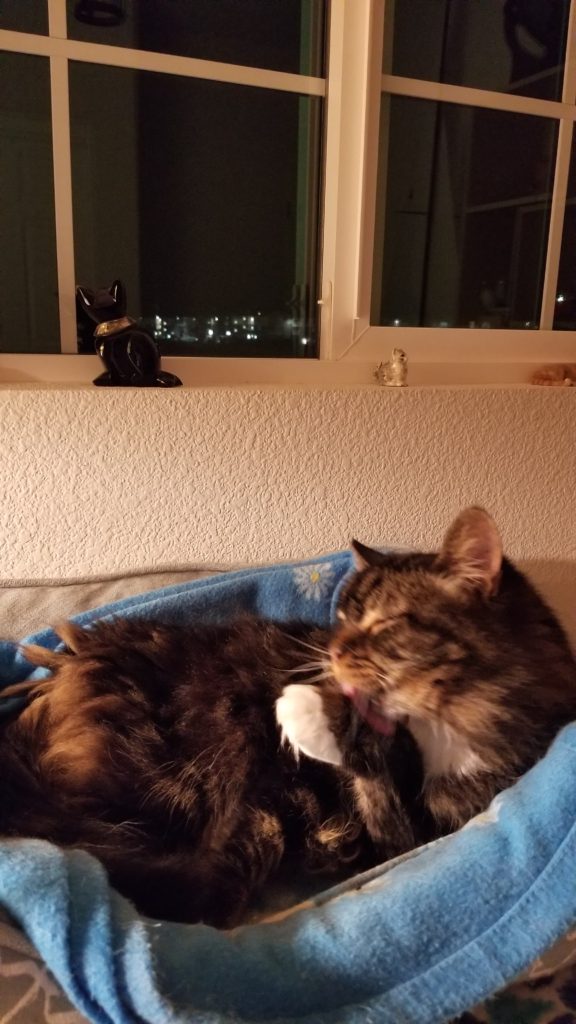
Cats, like humans, experience their golden age in a uniquely individual way. Similar to humans, cats develop chronic conditions as they age. Most of the diseases are not curable. Early detection and prevention are essential for your cat’s quality of life and overall well-being. Always check with your veterinarian and schedule routine examinations and testing.
The appropriate interventions may help your cat live a longer and healthier life. When you have a senior cat in your household, consider creating a safe and comfortable space for your older kitty.
The body changes in aging cats.
SNAP Cats.org reviews senior cat health and identifies the changes in aging animals. Cats, like people, undergo physical and behavioral changes as they age. Their immune system function decreases, and the cats lose the ability to withstand infections. Older cats may suffer from arthritis, a progressive deterioration of the joint structure and function, usually irreversible. Arthritis affects your cat’s mobility and may result in difficulty using a litter box. Pay close attention to the cat’s bathroom behaviors. Refusal to use the litter box may be related to arthritic pain and impaired mobility.
Another common health issue in aging cats is a change in sensory function. Hearing loss and impaired vision often affect the cat’s ability to navigate its environment. Additionally, your cat can suffer from heart disease, high blood pressure, kidney disease, diabetes, and other metabolic disorders. You can find more about senior cat health here: https://www.snapcats.org/2018/05/08/senior-cats/
All the listed above conditions affect your cat’s daily living and interfere with his ability to function. Your veterinarian is the best source of information regarding your cat’s health. Carefully observe the cat and report any changes in condition or unusual findings. The health care professional will determine the cat’s needs and provide the appropriate care plan. Here are some items in your house that will increase your senior cat’s quality of life.
Place multiple cat beds around the house.
Older cats have lower energy and experience mobility problems due to bone and joint diseases, pain, and other chronic conditions. Having a soft, comfortable bed will help your cat to have a good rest, relieve pain and pressure.
Provide warm blankets.
Senior cats have thin, fragile skin, diminished blood circulation, and less subcutaneous body fat that makes them unable to maintain the necessary body temperature. Provide blankets to keep the cats warm, especially during the winter season. You may utilize some fuzzy coats or clothing, and your cat may enjoy your scent.
Have multiple litter boxes with lower sides.
Pain and impaired mobility will present difficulty climbing in the litter box. Your cat may struggle to walk the distance to the litter box. The best practice is to place multiple litter boxes with low sides designed for senior cats. Position the litter boxes in convenient locations when the cat has a manageable walking distance and avoid using stairs if possible.
Access to freshwater.
A senior cat must have easy access to fresh, clean water at all times. Older cats are prone to dehydration and decreased blood circulation. Additionally, pain and mobility problems may restrict movement, decrease their desire to get up and walk a long distance to drink water. Clean and fresh water should be easily accessible for your senior. You can place multiple water dishes in the cat’s environment.
Utilize safe pet stairs.
Safe pet stairs can help your senior access the spots like your bed, desk, or favorite window. Determine the right size and dimensions for the stairs. Carpeted stairs provide a better grip for the paws. The rubber on the bottom of the stairs provides additional stability during use.
Avoid unsafe areas.
Restrict the cat’s access to unsafe areas, such as balconies, garages, machinery, heights, and slippery surfaces. If you have a multiple-story house, supervise your cat closely when using the house stairs. Prevent your senior from climbing on the railing or between the rails.
Summary.
Senior cats develop chronic conditions but may live a quality life with the appropriate interventions. Many of the health issues in older cats affect their daily functioning and ability to navigate their environment. Pain and impaired mobility related to arthritic changes decrease the cat’s ability to move safely and create more health risks, such as dehydration and inadequate food/water intake.
Always check with your veterinarian and schedule routine examinations. The healthcare professional will develop a treatment plan for your elderly cat.
Adjust your house and create a safe, comfortable environment for your cat by providing the necessary items and restricting access to unsafe conditions, such as house stairs, garages, balconies, and machinery.
